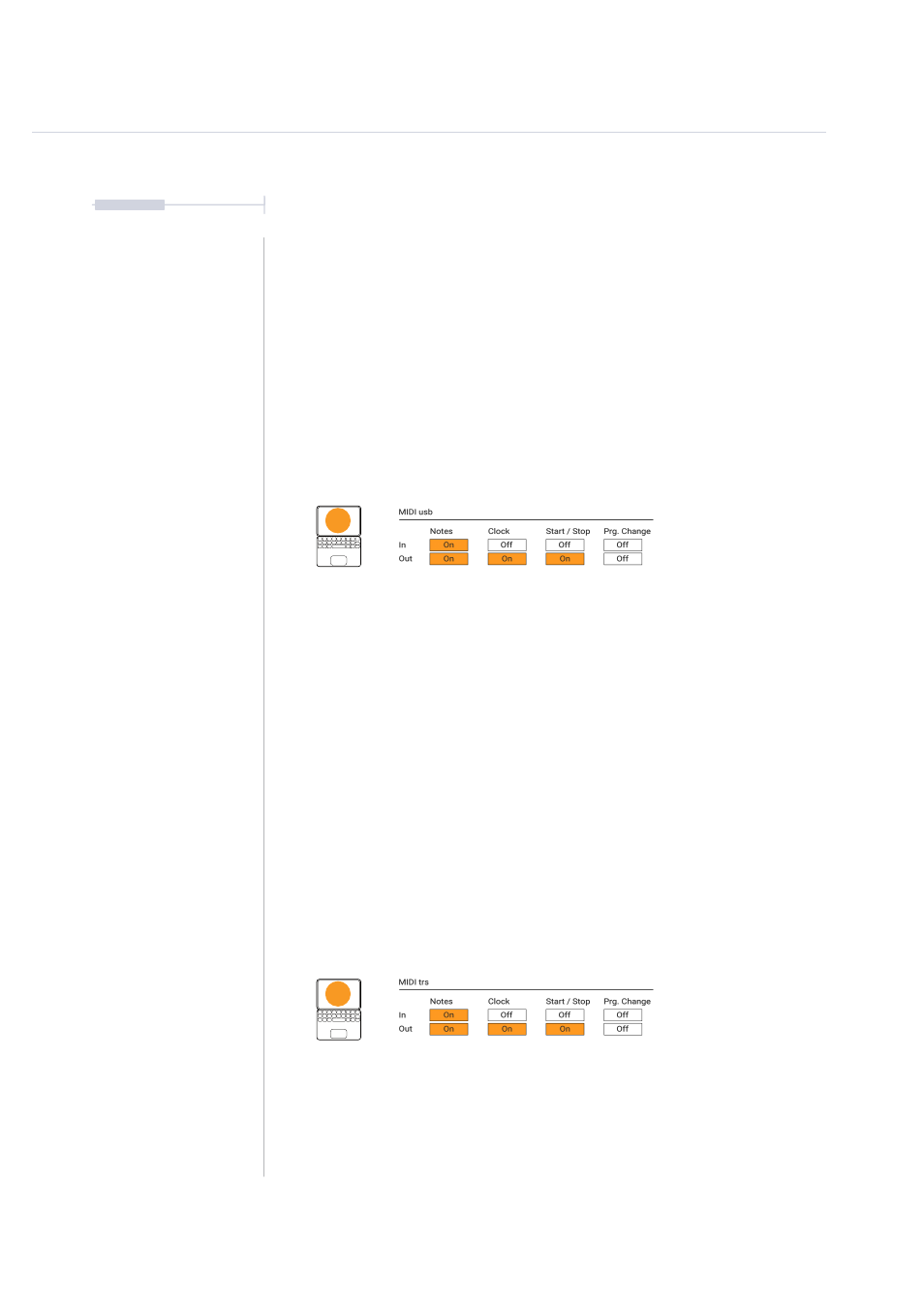4 midi configuration considerations, Midi & wifi connectivity – Torso Electronics T-1 16-Track Algorithmic Desktop Sequencer User Manual
Page 163

163
The T-1 Notebook : Reference & Guide
NOTES
8.4 MIDI Configuration Considerations
The global MIDI settings are accessible within T-1 using the T-1 Config tool.
Most default settings should be good to get started but in some
circumstances these may need to be changed. The actual settings to use
are highly dependant on the hardware configuration applied. The main T-1
MIDI settings to consider are found in the MIDI I/O page.
T-1 Config is a Mac/PC utility so standard mouse commands are used to
edit. More information on the general T-1 Config tool is given later.
T-1 Config - MIDI i/o Page
MIDI USB
MIDI trs
Controls the behaviour of the MIDI communications across the USB connection. USB
allows MIDI messages to be sent and received across the connection. Settings for In and
Out can be configured independently. Illustration shows defaults.
Notes: MIDI Note filter that, when ON, prevents notes being sent out of the T-1 USB port.
Clock: Normally this would be ON for messaging out. This will allow T-1 to be the primary
controller governing the clock timing of the setup. Connected follower devices should then
be set to receive an external clock. Typically only one device controls clock in a system.
The clock can also be set to on to receive clock signals in, thereby controlled externally. T-
1 Clock hierarchy is 1. Analog Clock, 2. MIDI Clock, 3. Link. Tempo is disabled when an
external MIDI clock is in control.
Start / Stop: The T-1 Start and Stop commands would be transmitted to other devices
when ON. Equally the Start and Stop messages from another device can be received by
T-1 when set to ON within the MIDI usb ‘in’ section.
Prg Change: MIDI Program change messages allow presets or patches to be changed on
the receiving device. When set to ON the T-1 can send ‘out’ or receive ‘in’ a program
change message. The actual behaviour is very much device dependant.
Controls the behaviour of the MIDI communications across the MIDI TRS connection. This
would be connected to the MIDI Type A dongle for 5-Pin MIDI connections. This allows
MIDI messages to be sent and received across the connection. Settings for In and Out
can be configured independently. Illustration shows defaults. The descriptions of each
function operate the same ways as the USB MIDI settings described above.
t|so
t|so
MIDI & WiFi Connectivity
8
